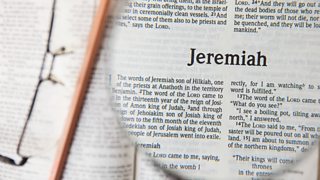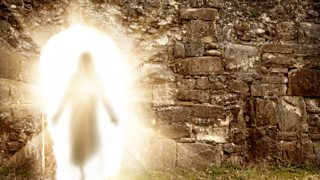Six Easter Choral Gems
It’s easy to think that choral music is about the music. But that would be to forget one of the most important things about singing: that the words and the music are designed to be heard together. In fact, it’s often the words which were the creative inspiration for some of our best-known pieces of choral music.
This is especially true of the Christian festivals of Lent and Easter, where Bible stories and religious traditions offer composers all the drama they could wish for, as well as the opportunity to articulate the key spiritual ideas of their faith.
Some special texts have been set over and again by many different composers – enduring poems, songs and ceremonies that have captured the spirit of Easter for each new generation.
Here’s our guide to navigating the words behind the sounds of Easter choral music.
Tenebrae
Tenebrae was an historic and intensely dramatic series of services which took place over the last three days of Holy Week (Maundy Thursday, Good Friday and Easter Saturday).

Each day’s observance included a specific sequence of "lessons" (Bible readings – including many from the book of Jeremiah, see below) with Psalms and sung responses. As the service progresses, candles are extinguished one by one and the church is gradually plunged into darkness. The priest loudly slams shut the service book, or stamps on the floor in a dramatic closing gesture, and the congregation file out in silence.
Tenebrae was primarily a Catholic tradition and it has been much revised in modern times. Services no longer follow the format that gave rise to some of the greatest sacred music settings in all of western music, including the wonderful Tenebrae Responsories by Victoria, Gesualdo and Lassus.
Here is a clip from Gesualdo's Responsories for six voices by the Hilliard Ensemble.
Lamentations
The "Lamentations of Jeremiah" come from the Old Testament part of the Bible.

They pre-date the Easter story by around 600 years.
The text is a series of desperately bleak poems that mourn the sacking of Jerusalem by the Babylonians, seemingly as punishment for the sins of its people. These words are traditionally recited during Holy Week as a metaphor for Christ’s own death at the hands of Rome.
Composers have loved to wallow indulgently in the abject misery of these texts, none more so than Thomas Tallis. Tallis also makes the most of a curious textual peculiarity – each line begins with a new letter of the Hebrew alphabet. Tallis creates ornate musical lines to highlight these initial letters, as if his setting were a lavish illuminated manuscript.
Here is a clip from Tallis's The Lamentations of Jeremiah, by The Sixteen Choir, conducted by Harry Christophers.
Stabat Mater
This Latin poem, which focuses on the suffering of Jesus’s mother Mary as she waits at the foot of the cross, is often heard at this time of year, although the text is not part of the current Easter liturgy in churches.

The words are not from the Bible – they were composed in the 13th century, possibly by a Franciscan Friar with a flair for dramatic gestures. The poet plunges us uncomfortably and intimately into the agony of Mary’s sorrow, and pleads with her that we should share her pain: “…O Mother, fountain of love, make me feel the power of sorrow, that I may grieve with you...”. It’s powerful yet beautiful, too, and these verses have captivated many great composers – often inspiring huge works that feel more at home in the concert hall than the church.
Dvořák, Haydn, Schubert and Rossini have all made big settings, although it’s the relatively unknown Giovanni Battista Pergolesi who boasts the most popular Stabat Mater of all. The subject matter and sheer length frequently makes for a wearying concert experience – but maybe that’s the point.
Here is a clip from Pergolesi's Stabat Mater Dolorosa, with soprano Emily Gray and Manchester Cathedral Choir, conducted by Christopher Stokes.
Miserere
This text is another that isn’t specifically tied to Easter, although it crops up as a key part of the Tenebrae sequence of services (see above).

The “Miserere” is more properly known as Psalm 51. It’s one of the 150 sacred songs that constitute the Book of Psalms in the Bible.
The words of the 51st Psalm are all about penitence and humility – good Lenten themes whatever your denomination. The Latin title comes from the opening line, “Miserere Mei” (Have mercy on me).
These beseeching words have been set to music many times. The version that’s most familiar today is by Gregorio Allegri. His setting was heard exclusively at the Vatican’s own Sistine Chapel Tenebrae service until, one Wednesday in 1770, the 14-year-old Mozart heard it there and afterwards wrote it down from memory. The musical cat was out of the bag and, ever since, those soaring high treble C’s of Allegri’s have been celebrated as one of the greatest moments in all choral music.
Here is a clip from Allegri's Miserere by Tenebrae, conducted by Nigel Short.
The Passions
"Passions" lay out the whole story of Jesus’s final days in a drama that usually begins with his triumphant arrival in Jerusalem. Each of the biblical Gospels tells the story in a slightly different way, and settings usually follow just one author’s version – Matthew, Mark, Luke or John – although the biblical text is often elaborated by a poet or writer.

It’s the protestant tradition that took this musical form and really ran with it. In Germany, Passions evolved into giant, multi-act cantatas that can be almost operatic in the way they capture the emotion of the Easter story. The most famous settings are by J S Bach. He wrote five, although only his St. Matthew Passion and St. John Passion survive. The St. Matthew and St. John Passions have become favourites all over the world. Sadly we can only imagine what magic the other three might have contained.
The two surviving passions include a full complement of soloists who play the main characters, chorus, orchestra and even a role for the congregation, who join in hymns or "chorales" throughout the action. But don’t expect a glorious blaze of trumpets and voices at the Resurrection – the events of Passions end on Good Friday, leaving audiences in a state of contemplation rather than triumph as they leave the church.
Here is a clip from Bach's St. John Passion (Ruht wohl, ihr heiligen Gebeine) by the Choir of New College Oxford, with Collegium Novum, conducted by Edward Higginbottom.
Messiah
Handel’s Messiah is a unique work that deserves its own entry in any list of Easter music.

It’s also one of the few enduring Easter choral traditions to arise from the Protestant tradition. And yes, this is an Easter piece, although you’re more likely to hear it around Christmas these days. Only part one is concerned with the Christmas story. Part two moves us to the Passion story of Christ’s trial, death and resurrection (including the most famous chorus in all British music: Hallelujah!). It’s often forgotten that the idea of the piece should properly be attributed to Charles Jennens, a scholar, early editor of Shakespeare, collector and Handel admirer who had the idea, assembled the text and gave it to Handel.
Of course, it was Handel who supplied the amazing music – written in about three weeks. When Handel premiered it in Dublin in 1742 all the proceeds of the concert went to local charities. And it’s a gift that keeps on giving.
Here is a clip from Handel's Messiah (Hallelujah) by King’s College Choir, Cambridge, conducted by Stephen Cleobury.

Composer of the Week on BBC Radio 3
-
![]()
Composer of the Week
Donald Macleod offers an informative and accessible guide to composers and their music.
-
![]()
Composers A to Z
Find BBC Radio 3 programmes about composers and their works.
-
![]()
Discovering the great composers
Listen to programmes about the lives and works of some of the greatest classical composers.
-
![]()
A man out of time – why Parry's music and ideas were at odds with his image...
The composer of Jerusalem was very far from the conservative figure his image suggests.




